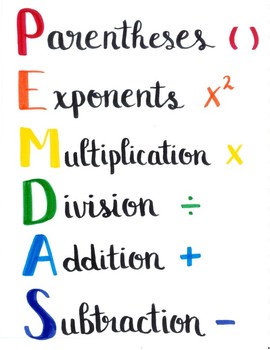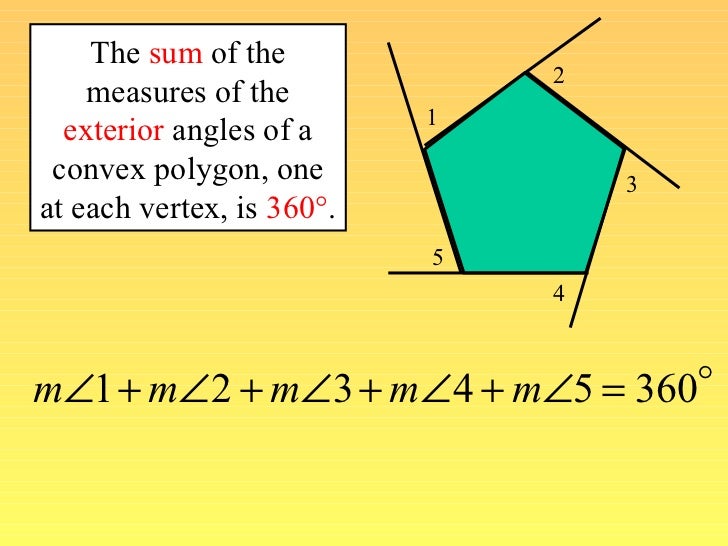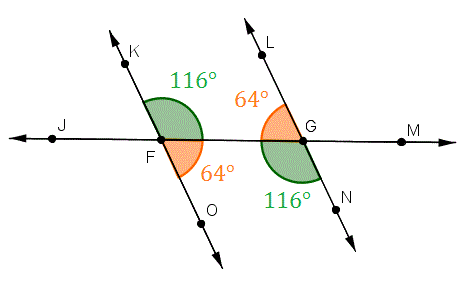16 KiB
Study Sheet
Unit 1: Diagnostic & Essential Number Skills
Rounding and Decimals
Decimals
- Terms:
- Given the number
9123.456:- The
tenthis the4. - The
hundredthis5. - The
thousandthsis6. - The
onesis3. - The
tensis5. - The
hundredsis1. - The
thousandsis9. - Remember,
tensandtenthsmay sound the same, but they areDIFFERENT!
- The
- Given the number
- To round to a
tenth,hundredth, andthousandths- Tenths
- If the
hundredthis5or higher, round up, else, round down. - Example:
- Round
12.53223to the tenths - The answer is
12.5, as the hundredths, or3is smaller than 5.
- Round
- If the
- Hundredth
- If the
thousandthis5or higher, round up, else, round down. - Example:
- Round
12.53521to the hundredth - The answer is
12.4, as the thousandths, or5is bigger or equal to 5.
- Round
- If the
- Thousandth
- If the number of the
thousandthis5or higher, round up, else, round down.
- Example:
- Round
12.5356to the thousandths - The answer is
12.536, as the number after the thousandths, or6is bigger than 5.
- Round
- If the number of the
- Tenths
- To round to a
ones,tens,hundreds, andthousands- Ones
- If the
tenthsis5or higher, round up, else, round down. - Example:
- Round
123.5333to the ones - The answer is
124, as the tenths, or5is bigger than or equal to 5.
- Round
- If the
- Tens
- If the
onesis5or higher, round up, else, round down. - Example:
- Round
123.5777to the tens - The answer is
120, as the ones, or3is smaller than or equal to 5.
- Round
- If the
- Hundreds
- If the
tensis5or higher, round up, else, round down. - Example:
- Round
177.34343to the hundreds - The answer is
200, as the tens, or7is bigger than 5.
- Round
- If the
- Thousands
- If the
hundredsis5or higher, round up, else round down. - Example:
- Round 566.777` to the thousands
- The answer is
1000, as the hundreds, or5is bigger or equal to 5.
- If the
- Ones
Integers
Multiplication and Division
Pretend
aandbare random positive numbersType Outcome a × b Positive number a × (-b) Negative number (-a) × b Negative number (-a) × (-b) Positive number a ÷ b Positive number a ÷ (-b) Negative number (-a) ÷ b Negaitve number (-a) ÷ (-b) Positive number Treat as normal divion and multiplacation, and just add the negative sign infront of the number according to the rules above.
Practice
- 8 × -7
- Answer:
-56
- Answer:
- 2 × 4
- Answer:
8
- Answer:
- -7 × -7
- Answer:
1
- Answer:
- -10 × 4
- Answer:
-40
- Answer:
- 8 ÷ 4
- Answer:
2
- Answer:
- -16 ÷ -8
- Answer:
2
- Answer:
- -4 ÷ 1
- Answer
-4
- Answer
- 9 ÷ -3
- Answer:
-3
- Answer:
- 8 × -7
Addition and Division
Pretend
aandbare random postive numbersType Equivalent a+b a+b b+a b+a a+(-b) a-b (-a)+b b-a a-b a-b b-a b-a a-(-b) a+b (-a)-b a-b
Order Or Operation
- BEDMAS
- Follow
BEDMASfor order of operations if there are more than one operation
| Letter | Meaning |
|---|---|
| B / P | Bracket / Parentheses |
| E | Exponent |
| D | Divison |
| M | Multiplication |
| A | Addition |
| S | Subtraction |

- Follow order of operation, inorder to do know which operation to do first.
- Example: Given \(`(2+4) \times 5 - 9 \div
3`\)
- First do everything in brackets: \(`(6) \times 5 - 9 \div 3`\)
- Then do multiplication/division: \(`30 - 3`\)
- Then finally, do subtaction/addition: \(`27`\)
- The answer is
27.
Fractions / Rational Numbers
- The number on the top is called the
numerator. - The number on the bottom is called the
denominator. - A fraction in its most simple form is when the
numeratoranddenominatorcannot be both divided by the same number.
Additions / Subtractions With Fractions
- Example: \(`\frac{3}{5} + \frac{4}{3}`\)
- Find
common denominator, which is15, as5and3both are factors of15.- You can do this easily with a table, just count by the number you are using, for example:
Counting by 5s Counting by 3s 5 3 10 6 15 9 20 12 25 15 - As you can see, both columns contain the number
15, so15is the common denominator. - Now, after we find the denominator, we must convert the fraction so
that it has the
common denominator. To do this, we must multiply the denominator by a number, so that it equals thecommon denominator. For the first fracion \(`\frac{3}{5}`\), thedenominatoris5, to get to15, we must multiply it by3. Now, whatever we do on the bottom, me MUST do it on the top too, so we also multiply thenumeratorby3as well, the new fraction is now \(`\frac{3 \times 3}{5 \times 3} = \frac{9}{15}`\). - We now do the same thing to the other fraction: \(`\frac{4 \times 5}{3 \times 5} = \frac{20}{15}`\)
- Now that the denominators are the same and the fractions are
converted, we can just simply add the
numeratorstogether while keeping thedenominatorthe same. The result is \(`\frac{9 + 20}{15} = \frac{29}{15}`\). - The same steps applied to subtracion, with the only difference of subtacting the numerators rather than adding them.
Multiplaction With Fractions
- To multiply a fracion, simply multiply the
numeratorstogether, and thedenominatorstogether. - Example: \(`\frac{3}{6} \times
\frac{7}{4}`\)
- Answer: \(`\frac{3 \times 7}{6 \times 4} = \frac{21}{24}`\)
Division With Fractions
- To divide 2 fractions, flip the second fraction upside down and multiply them togehter.
- Or, in advanced terms, mulitply the first fraction by the reciporocal of the second fraction.
- Given an example: \(`\frac{4}{2} \div
\frac{6}{9}`\)
- First, flip the second fraction upside down: \(`\frac{4}{2} \div \frac{9}{6}`\)
- Then change the division to a multiply: \(`\frac{4}{2} \times \frac{9}{6}`\)
- Then multiply the 2 fractions \(`\frac{4 \times 9}{2 \times 6} = \frac{36}{12}`\)
Unit 2: Measurement
Measuring Perimeter and Area
2D Shapes
| Shape | Formula | Picture |
|---|---|---|
| Rectangle | Area: \(`lw`\) Perimeter: \(`2(l+w)`\) |
|
| Triangle | Area: \(`\frac{bh}{2}`\) Perimeter: \(`a+b+c`\) |
|
| Circle | Area: \(`πr^2`\) Circumference:
\(`2πr`\) or \(`πd`\) |
|
| Trapezoid | Area: \(` \frac{(a+b)h}{2}`\) Perimeter: \(`a+b+c+d`\) |
Right Triangle and Pythagorean Theorem
aandbare the two legs of the triangle or two sides that form a 90 degree angle of the triangle,cis the hypotenuse
\(`a^2+b^2=c^2`\)

Area of Composite Figures
- You can cut any normal polygon into standard polygons you know, for example, a polygon shaped as a house can be split into a recntalge and a triangle. All normal polygon, can be simplified into triangles.
Perimeter of Composite Figures
- Same as an area of composite figures, cut them down into much simplified shapes so you can easily calculate its area. Alternatively, if its possible, you can even measure the shape using a tool such as ruler.
3D Objects
| 3D Object | Formula | Picture |
|---|---|---|
| Rectangular Prism | Volume: \(`lwh`\) SA: \(`2(lw+lh+wh)`\) |
|
| Square Based Pyramid | Volume: \(`\frac{1}{3} b^2 h`\) SA:
\(`2bs+b^2`\) |
|
| Sphere | Volume: \(`\frac{4}{3} πr^3`\) SA:
\(`4πr^2`\) |
|
| Cone | Volume: \(` \frac{1}{3} πr^2 h`\) SA: \(`πrs+πr^2`\) |
|
| Cylinder | Volume: \(`πr^2h`\) SA: \(`2πr^2+2πh`\) |
|
| Triangular Prism | Volume: \(`ah+bh+ch+bl`\) SA: \(` \frac{1}{2} blh`\) |
Unit 3: Optimization
Optimization (For Maximimizing Area/Volume, or Minimizing Perimeter/Surface Area)
2D Shapes
| Shape | Maximum Area | Minimum Perimeter |
|---|---|---|
| 4-sided rectangle | A rectangle must be a square to maximaze
the area for a given perimeter. The length is equal to the
width \(`A = lw`\) \(`A_{max} = (w)(w)`\) \(`A_{max} = w^2`\) |
A rectangle must be a square to minimaze
the perimeter for a given area. The length is equal to the
width. \(`P = 2(l+w)`\) \(`P_{min} = 2(w)(w)`\) \(`P_{min} = 2(2w)`\) \(`P_{min} = 4w`\) |
| 3-sided rectangle | \(`l =
2w`\) \(`A = lw`\) \(`A_{max} = 2w(w)`\) \(`A_{max} = 2w^2`\) |
\(`l =
2w`\) \(`P = l+2w`\) \(`P_{min} = 2w+2w`\) \(`P_{min} = 4w`\) |
Unit 4: Relationship in Geometry
Angle Theorems
1. Transversal Parallel Line Theorems (TPT)
- Alternate Angles are Equal
(Z-Pattern)
- Corresponding Angles Equal
(F-Pattern)
- Interior Angles add up to 180
(C-Pattern)
2. Supplementary Angle Triangle (SAT)
When two angles add up to 180 degrees

3. Opposite Angle Theorem (OAT) (OAT)
Two lines intersect, two angles form opposite. They have equal measures

4. Complementary Angle Theorem (CAT)
The sum of two angles that add up to 90 degrees

5. Angle Sum of a Triangle Theorem (ASTT)
The sum of the three interior angles of any triangle is 180 degrees

6. Exterior Angle Theorem (EAT)
- The measure of an exterior angle is equal to the sum of the measures of the opposite interior angles
-
7. Isosceles Triangle Theorem (ITT)
The base angles in any isosceles triangle are equal

8. Sum of The Interior Angle of a Polygon
The sum of the interioir angles of any polygon is
180(n-2)or180n - 360, wherenis the number of sides of the polygon
9. Exterior Angles of a Convex Polygon
The sum of the exterior angle of any convex polygon is always
360 degrees
Unit 5: Proportional Reasoning
Equivalent Ratios
An easy way to see if ratios are equivalent is to see if the ratios are the same in its simpliest form. A ratio is a fraction in essence, the first number is the
numerator, and the second number is thedemominator.An easy way to find an equivalent ratio is just to multiply the everything by 2, for example, given a ratio
2:5, multiply everything by 2, so your new ratio will be2x2:5x2 = 4:10.
Ratio and Proportions
- Ratios link directly with proportions, as a ratio of one thing can be applied to another ratio of another thing.
- Example
- Given one ratio of one triangle’s height to base and another ratio of another triangle’s heigth to base, we can find one missing side length given that we have the other 3.
- Lets say the 2 ratios are
1:5and3:x, given thatxis a random number. - To solve
x, we can cross-multiply, or multipling thenumeratorswith thedenominatorsand setting them equal to each other. Thus, we can first make the ratios into fractions and then do: \(`\frac{1}{5} \text{ cross-multiply } \frac{3}{x} \rightarrow 1x = 3 \times 5`\). Which we can then solve forx, which is15.
Solving Algebraic Equations
- To solve equations, just remove the extra bits on both sides by doing the opposite. So if its addition, do subraction to get rid of the added numbers, and vice versa:
| Example | To solve: |
|---|---|
| \(`x + 3 = 15`\) | \(`(x + 3)-3 =
15-3`\) \(`x = 12`\) |
| \(`x - 3 = 15`\) | \(`(x - 3)+3 =
15+3`\) \(`x = 18`\) |
| \(`x \div 3 = 15`\) | \(`(\frac{x}{3})
\times 3 = 15 \times 3`\) \(`x = 45`\) |
| \(`x \times 3 = 15`\) | \(`\frac{x
\times 3}{3} = \frac{15}{3}`\) \(`x = 5`\) |
Fraction to Decimal
- Simply divide the
numeratorby thedenominator. So \(`\frac{3}{4} = 3 \div 4, \text{or } 0.75`\). ## Fraction to Percent - The percentage symbol
%, means the number has been multiplied by 100, so given a fraction \(`\frac{3}{4}`\), convert the fraction into a decimal. Then multiply that decimal by100. - \(`\frac{3}{4} = 0.75 \rightarrow 0.75 \times 100 = 75\%`\)
Percent as a Ratio
- Simply divide the first number by the second number, and multiply by
one
100. It is the same as making the ratio into a fraction, then converting the fraction into a percentage.
